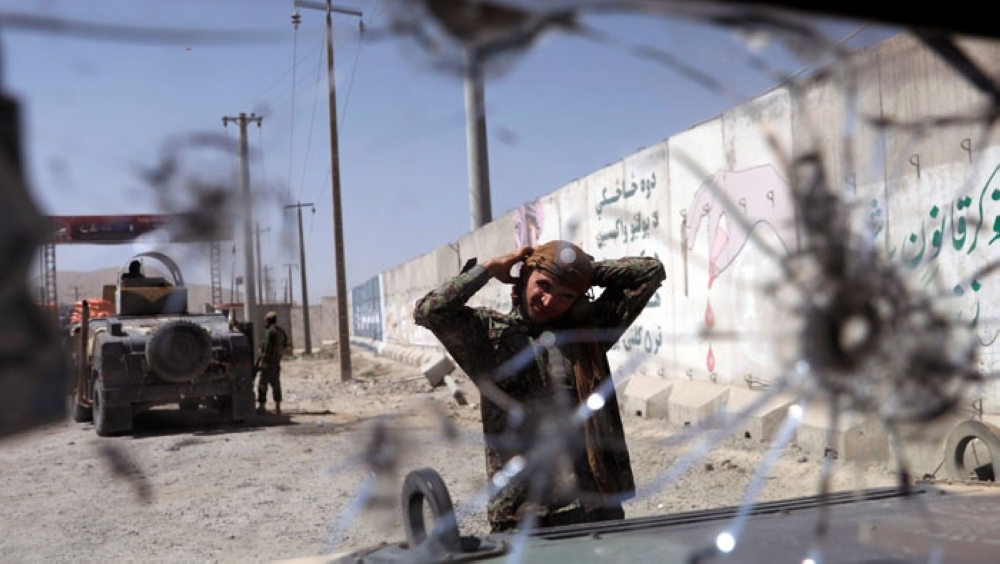After nearly 18 years of intervention by the US-led NATO forces, the security situation in Afghanistan is still a major concern for the international community. Despite the many efforts and resources aimed at bringing peace and stability to Afghanistan, the result has been insufficient at most.
The current situation in the country is influenced by various domestic, regional and global developments. In the aftermath of the drawdown of the NATO and the ISAF forces from Afghanistan in 2014 and substantial reduction in foreign economic assistance, the security and economic situation in Afghanistan has further worsened. Besides, due to polarization in the Afghan National Unity Government (NUG) with its division into two camps led by President Ghani and Chief Executive Officer Abdullah, the government is not capable of handling its domestic, defence and foreign policies in an effective and coordinated manner.
The present, hard approach has little or no chance of success unless a comprehensive approach, including a political reconciliation process, is adopted. The prospects for a political settlement of Afghan conflict could be more promising if all sides understand that military means could hardly make the big breakthrough. It is also important to understand that peace in Afghanistan is an imperative, and not an option. Although, the obstacles in establishing a peace process are numerous such as contradicting terms for peace talks, insufficiency of political will, competing interests of various parties, grave disagreement among major ethnic groups in Afghanistan, and unclear policies of the US and major powers in the region stand right in the way but making a peace process a successful one is an only option to establish a peace in Afghanistan.
The security situation of Afghanistan is in a state of flux. The Afghan Taliban insurgency continues to haunt the country; a situation is further worsened after the emergence of the Islamic State of Iraq and Syria (ISIS) chapter in Afghanistan. Resultantly, there has been heavy fighting in several areas of Afghanistan especially, in provinces ranging from Kunduz to Kunar in the east and Uruzgan and Ghazni in the centre. Despite the Taliban’s factionalism and infighting, its military energy is still intact. In fact, tactical and even strategic victories have been accruing to the Taliban.
The al-Qaeda and other terrorist groups continue to be present in Afghanistan. The terrorist group Islamic State has dramatically increased its presence in the country and it is preparing to expand into other Central Asian countries, Russia and China, etc. Moreover, the Operation Zarb-e-Azb followed by Operation Radd-ul-Fasaad launched by the Pakistani Army is an endeavour to destroy miscreants’ operational baseline, at the same time the miscreants such as Tehrik-e-Taliban Pakistan (TTP), and others militant groups escaped and assembled in Khost, Nuristan and Kunar regions of Afghanistan during the Operation Zarb-e-Azb.
The clustering of the TTP, al Qaeda, and of those militant groups, which have shown allegiance to ISIS such as Jamaat-ul-Ahraar, East Turkestan Islamic Movement (ETIM), Islamic Movement of Uzbekistan (IMU), and other radical organizations in these areas are of same mindset (extremist) aiming to use the area as a campground for the creating instability in the region. These groups are being used as proxies by the hostile intelligence agencies especially against Pakistan.
The given field situation in Afghanistan, on the one hand, would likely not encourage Taliban into serious peace talks and one may hardly affirm whether Taliban are sincere in peace talks or just engaged in delaying tactics since Taliban at present seems to be confident enough to believe that time is in their favour. On the other hand, it seems that Washington’s position lies roughly between Kabul and the Taliban.
It is neither ready to make any meaningful compromise nor it would reject fruitful peace talks. Washington used to be quite cold on peace talks between Kabul and Taliban, as its agreed tactics for peace talks could be summarized as “talk while fight, and fight for the talk.” Things from Taliban side are equally discouraging. Despite limited engagements with the Kabul government through Murree Peace Talks, the Taliban has always rejected formal peace talks with Kabul by sticking to their own preconditions. One could conclude that anti-peace-talk elements within the Taliban are prevailing at present.
Furthermore, the Afghan security situation keeps worsening as a result of all sides’ simultaneous attempts to make peace talks from a position of strength. For instance, Kabul, Washington and Taliban all engage themselves in a zero-sum-game of peace talks on the one hand, and military-cum-political offensives on the other hand. The US troops as the major combating force against the Taliban has never de-intensified its military campaigns. It has also announced the US troop surge and its residual forces are already engaged against the Afghan Taliban.
Kabul has engaged in an unclear-game in calling for peace talks on the one hand and expanding its military campaign on the other hand. The same tactics are employed by the Taliban in terms of increasing the intensity of their insurgency against the Afghan government resulting in civilian-military casualties. Thus “offensive for talk” mindset in Washington, Kabul or Taliban would intensify rather than alleviate the situation on-ground in Afghanistan.
DISCLAIMER: The views and opinions expressed in this article are those of the author and do not necessarily reflect the official policy and position of Regional Rapport.



